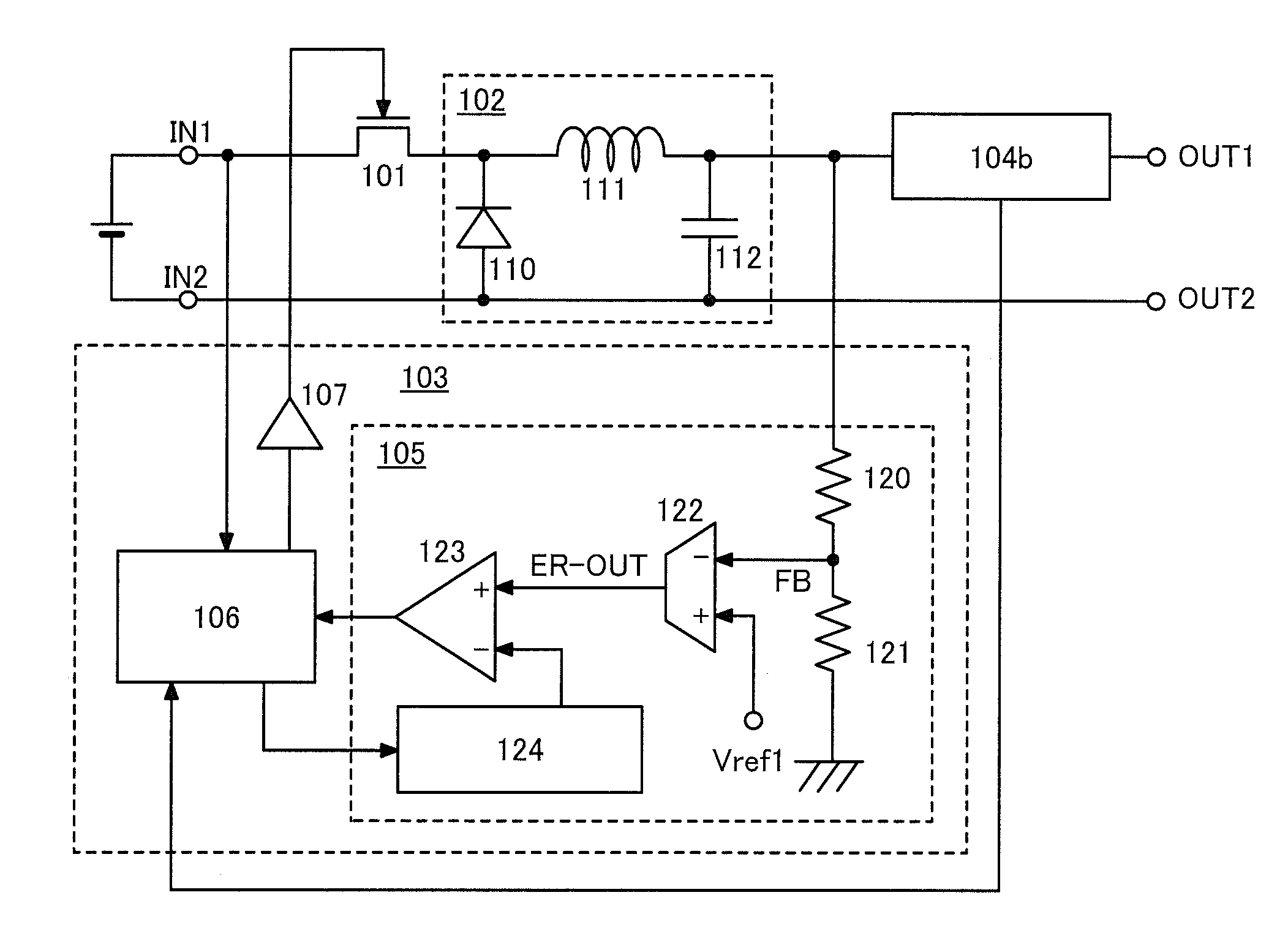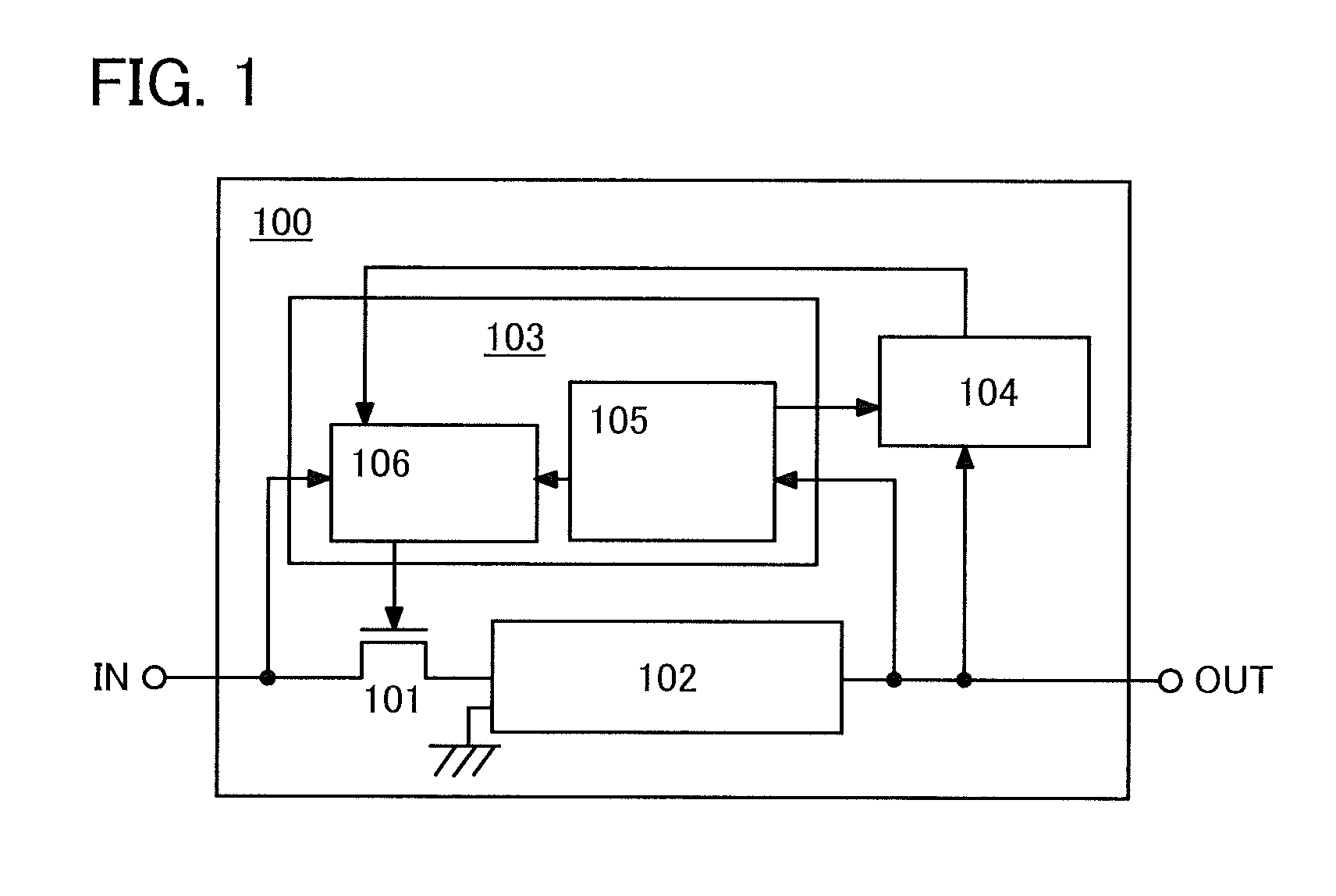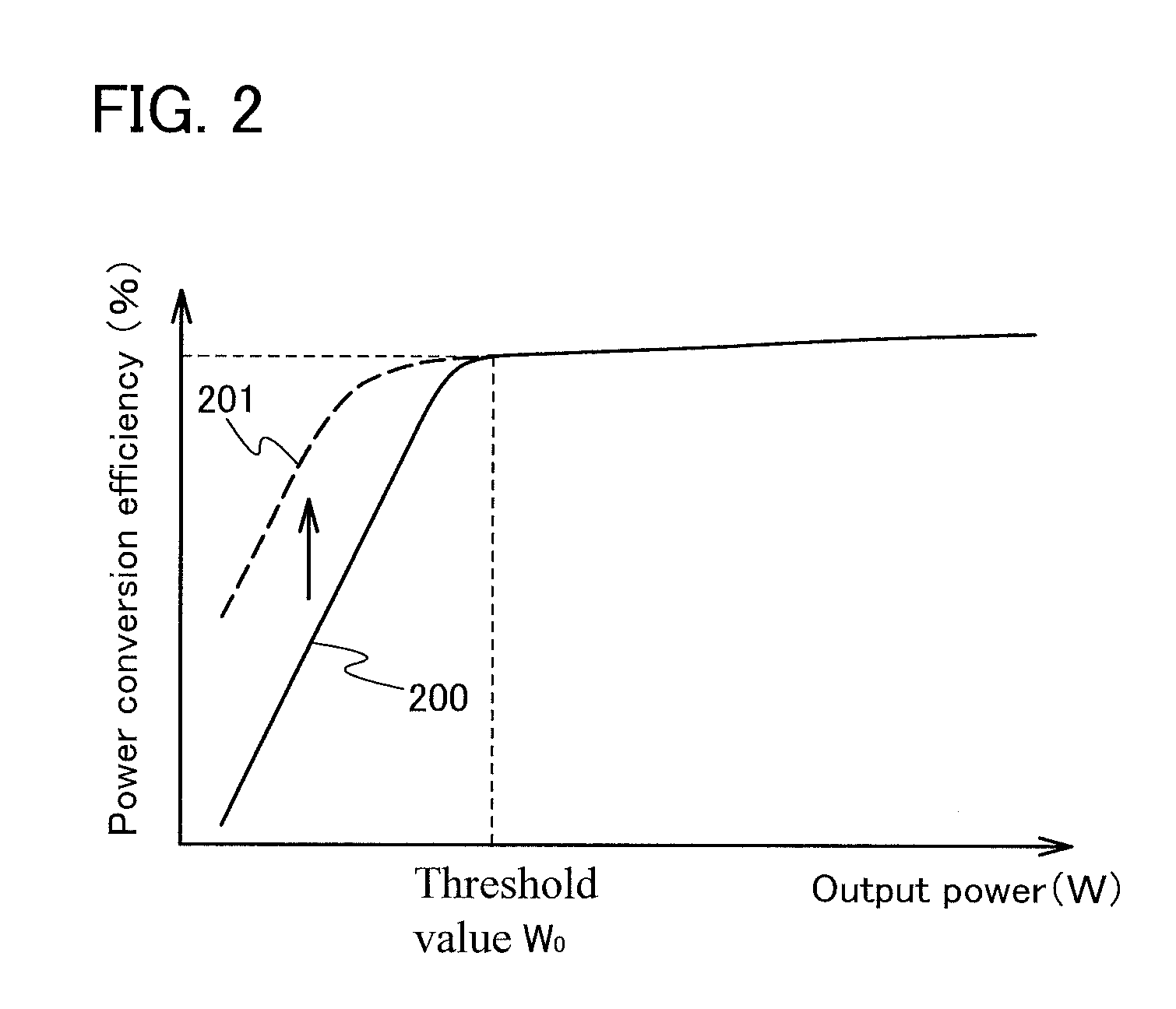Dcdc converter, semiconductor device, and power generation device
a power generation device and converter technology, applied in the direction of electric variable regulation, process and machine control, instruments, etc., can solve the problems of low power input to a dcdc converter, long continuous operating time of a portable electronic device including the semiconductor device, and low power consumption of the semiconductor device, so as to reduce the power loss inside the dcdc converter, suppress the reduction of power conversion efficiency, and reduce the power consumption of the control circuit
- Summary
- Abstract
- Description
- Claims
- Application Information
AI Technical Summary
Benefits of technology
Problems solved by technology
Method used
Image
Examples
embodiment 1
[0033]FIG. 1 shows an example of a structure of a DCDC converter according to one embodiment of the present invention. A DCDC converter 100 shown in FIG. 1 includes a transistor 101 serving as a switching element, a voltage conversion portion 102, a control circuit 103, and a detection circuit 104.
[0034]The transistor 101 controls supply of voltage supplied to an input terminal IN (input voltage) to the voltage conversion portion 102. Specifically, when the transistor 101 is turned on, the input voltage is supplied to the voltage conversion portion 102, and when the transistor 101 is turned off, the supply is stopped. In addition, when the transistor 101 is turned off, fixed voltage such as ground potential is supplied to the voltage conversion portion 102. Thus, in response to switching of the transistor 101, a signal with a pulse voltage waveform in which the input voltage and the fixed voltage appear alternately is supplied to the voltage conversion portion 102.
[0035]The voltage ...
embodiment 2
[0089]In this embodiment, an example of a lighting device which is one of semiconductor devices according to one embodiment of the present invention will be described. FIG. 9 illustrates an example of a structure of a lighting device.
[0090]The lighting device in FIG. 9 includes an AC power source 301, a switch 302, a rectification circuit 303, the DCDC converter 100, and a light-emitting element 304. The rectification circuit 303 and the DCDC converter 100 form a power supply circuit.
[0091]The DCDC converter 100 in FIG. 9 has the same structure as that of the DCDC converter 100 in FIG. 3 or FIG. 7. Specifically, in the lighting device in FIG. 9, AC voltage from the AC power source 301 is supplied to the rectification circuit 303 through the switch 302 and rectified. DC voltage obtained by the rectification is input to the DCDC converter 100 and is output after the level is adjusted. Description in Embodiment 1 can be referred to for specific operation of the DCDC converter 100.
[0092...
embodiment 3
[0097]In this embodiment, one embodiment of a solar power generation device which is one of power generation devices according to one embodiment of the present invention will be described. FIG. 10 shows an example of a structure of a solar power generation device.
[0098]The solar cell in FIG. 10 includes a photodiode 350 serving as a solar battery, a switch 351, a capacitor 352, the DCDC converter 100, a pulse width modulation circuit 353, an inverter 354, and a band pass filter 355.
[0099]The DCDC converter 100 in FIG. 10 has the same structure as that of the DCDC converter in FIG. 3 or FIG. 7. Specifically, in the solar power generation device in FIG. 10, voltage is generated when light is delivered to the photodiode 350. The voltage smoothed by the capacitor 352 is input to the DCDC converter 100 through the switch 351. Note that with the capacitor 352, the pulsed current generated by switching of the switch 351 can be prevented from flowing through the photodiode 350.
[0100]Then, t...
PUM
 Login to View More
Login to View More Abstract
Description
Claims
Application Information
 Login to View More
Login to View More - R&D
- Intellectual Property
- Life Sciences
- Materials
- Tech Scout
- Unparalleled Data Quality
- Higher Quality Content
- 60% Fewer Hallucinations
Browse by: Latest US Patents, China's latest patents, Technical Efficacy Thesaurus, Application Domain, Technology Topic, Popular Technical Reports.
© 2025 PatSnap. All rights reserved.Legal|Privacy policy|Modern Slavery Act Transparency Statement|Sitemap|About US| Contact US: help@patsnap.com



